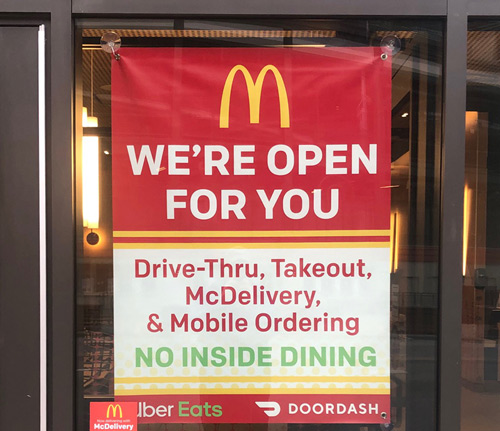In response to the COVID-19 pandemic, restaurant dining rooms continue to go dark across the country. As a result, restaurant and bar operators now offer modified service in the form of takeout, curbside pickup or delivery. Unless the operator is a quick-service or fast-casual concept that’s used to preparing its food for travel, making this transition is not as easy as it may seem.

"Systematically, most operators are not set up for that,” says Karen Malody, FCSI, principal for Culinary Options, an Oregon-based foodservice consulting firm. “What we know is that off-premise ordering has been increasing so many operators have been on that trajectory already but certainly not to this extent.”
For operators deciding to offer their food via takeout, curbside pickup or even delivery, Malody suggests a multifaceted approach that centers on the menu.
Operators should determine what items on their menus will travel effectively. “Those who have been doing this for a while, hopefully will have some high-profit items that are good travelers,” Malody says. “Determine what items are real stars from a sales and profit standpoint and focus on them. No sense in delivering those that are not because you will erode your profits more.”
Also, restaurants should use this exercise as an opportunity to focus their operations to make more effective and efficient use of what resources they have. “In combination with that, reduce your menu, unless, of course, you already have a limited menu,” Malody adds. “Do not try to serve your entire menu in delivery or pickup mode.”
Focusing on which items travel well and strategically reducing the menu gives operators the opportunity to reduce the amount of money they have tied up in food and ingredients, which can take some of the strain off their finances, Malody notes. “I am guessing a lot of operators can cut their menus in half by taking those steps. Unless something is a best seller, get it out of there for now. You can’t hope to keep the same menu and get through this.”
After a fresh look at the menu, operators should look to freshen up their packaging, too, to ensure they use the right items for transporting food to customers. “Now their brand will rely solely on how their food shows up at that point of consumption,” Malody says. “Make sure your food looks good and you maintain food quality.”
Tamper-Proof Delivery Items
While always an important consideration when it comes to transporting deliveries, the issue of food safety becomes even more amplified during times of crisis. Social media remains littered with examples of delivery personnel sampling customers’ food orders before handing off the food and beverage to the consumer. “In this time of crisis, I hope people will only send out food in tamper-proof bag,” Malody says. “It costs more but you can provide food that is safe by using a tamper-proof bag.”
Operators will also need to pay close attention to how they process orders and store them for delivery or pickup. “You have to man the phones and work with people with the understanding of how the kitchen is responding,” Malody says. That way you can let customers know when their food will be ready. Reducing the menu can really help in these instances, Malody notes.
Indeed, managing customer expectations without compromising food quality will be a greater challenge for some. “This has created a nation of ghost kitchens. But most are not ghost systems and their systems are not set up for this. A lot of restaurants don’t have the sophisticated tech systems that tell customers when to pick up their orders. So, it’s going to have to be a bit of a cut and paste solution,” Malody says. “This is why really scrutinizing what will travel well is so important.”
Of course, it’s not enough to simply offer food via delivery, curbside pickup or takeout. Operators need to let their customers know they remain open for business. To help operators build awareness, some third-party delivery providers have waived their commissions and offered to help market participating independent restaurants at no charge for the time being.
The operators should do their part, too. “Let customers know you are able and willing to serve them in this manner,” Malody says. “Not everyone is a takeout or a delivery freak and they might not think they can support their favorite restaurants in this way.”
Incentivize for the Long Term
And it never hurts to thank customers who support your restaurant during times like these and open the door to future business. “I would put a thank you note in every takeout bag and put a coupon to entice them to visit the restaurant in the future,” Malody says. “In a low net profit business, those are hard things to do but they are better than having to close your doors. What we don’t know are what the long-term behavioral affects will be. So, it’s not a bad idea to incentive long-term business.”
Indeed, with the situation pertaining to COVID-19 remaining so fluid, now is not a time to sit back and take a deep breath. “This is a time when people really need to think so far outside of their methodologies. You have to do things that are so uncomfortable and unusual,” Malody says. “This applies to everyone up and down the chain. The long-reaching impact of that can’t be fathomed. The idea should be to reduce the menu and potentially staff while giving excellent customer service.”




